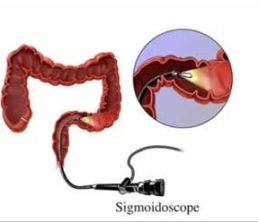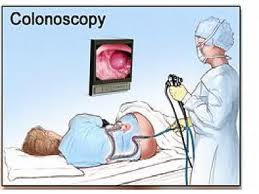What is Flexible Sigmoidoscopy?
A flexible sigmoidoscopy is a test at that permits your doctor to seem throughout the rectum and lower a part of your bowel using a slender, flexible, tube-like telescope called a sigmoidoscope. This is thoroughly inserted into your back passage.
The test can assist to find out what’s causing symptoms equivalent to adjustments in bowel dependency or rectal ache. It is regularly used to test for inflammation, early indicators of most cancers and polyps. During the process, your physician may take one or more biopsies (samples of tissue) for examination in a laboratory. If essential, it’s possible to remove polyps and deal with haemorrhoids during the process. Flexible sigmoidoscopy is routinely done as an out-patient process. Your physician will give an explanation for the advantages and dangers of having a sigmoidoscopy, and can talk about possible choices to the procedure. Depending on your symptoms, choices may include:
- Barium enema
- Colonoscopy
- Virtual colonoscopy
How this test is different from colonoscopy
Flexible sigmoidoscopy permits the doctor to peer simplest the sigmoid colon, while colonoscopy lets in the physician to see the entire colon. Colonoscopy is the most popular screening approach for cancers of the colon and rectum; on the other hand, to organize for and carry out a flexible sigmoidoscopy usually requires less time.
How to organize for a Flexible Sigmoidoscopy:
To prepare for a Flexible sigmoidoscopy, a number of enemas are performed approximately 2 hours before the procedure to take away all solids from the sigmoid colon. An Enema is carried out via flushing water, laxative, or every now and then a mild cleaning soap solution into the anus the usage of a special wash bottle.
In some cases, all of the gastrointestinal tract should be emptied through following a transparent liquid nutrition for 1 to 3 days prior to the procedure—very similar to the preparation for colonoscopy. Sufferers should not drink beverages containing red or pink dye. Liquids include:
- Sports drinks
- Water
- Plain tea or coffee
- Gelatin
- Strained fruit juice
- fat-free bouillon or broth
Patients must inform their doctor of all scientific conditions and any medications, vitamins, or dietary supplements taken steadily, that include:
- Blood thinners
- Vitamins that contain iron
- Diabetes medications
- Aspirin and
- Arthritis medications
How Is a Flexible Sigmoidoscopy carried out?
A flexible sigmoidoscopy is performed by way of a doctor skilled in the process and usually lasts from 10 minutes to 20 minutes. Sedation is not required. Your doctor may have you lie to your left facet, with your knees drawn up. The sigmoidoscope is inserted during the rectum and passes slowly into the sigmoid colon. A small quantity of air is used to enlarge the colon so the doctor can see the colon walls. You might really feel gentle cramping all through the procedure. You’ll be able to cut back the cramping via taking a couple of slow, deep breaths all the way through the procedure. When the doctor has completed, the sigmoidoscope is slowly withdrawn at the same time as the liner of your bowel is carefully examined.
After a Flexible Sigmoidoscopy:
After the process your doctor will discuss the result of your Flexible sigmoidoscopy with you. You might truly really feel a few cramping or a sensation of getting gasoline, however this steadily passes in short. You would possibly resume your normal diet and actions. If growths or polyps are discovered during the process, a biopsy (removal of tissue) of the polyp, or polyps, is also taken, or you will be recommended to have a complete colon examination, by way of colonoscopy with polyp removing. Puncture of the colon is a major — even supposing rare — conceivable hassle of sigmoidoscopy. Call your doctor immediately, if you are experiencing any of the following:
a) Heavy rectal bleeding
b) Fever and chills and
c) Severe abdominal pain
Advantages of flexible sigmoidoscopy:
- Flexible sigmoidoscopy lets in direct visualization of the lining of the last portion of the colon.
- It is a quicker process than colonoscopy, usually lasting between five to 15 mins.
- It does now not require sedation and the person can return to work soon after the procedure.
Complications of flexible sigmoidoscopy:
- Discomfort right through the procedure
- Bloating and abdominal cramps following the procedure
- Bleeding following the procedure, that’s on a regular basis minor
- Perforation of the bowel. This critical trouble is frequently infrequently observed with the procedure.
Flexible sigmoidoscopy is an often carried out and normally safe process. For most of the folks, the advantages in relation to having a clear analysis are much greater than any hazards. Alternatively, all medical techniques lift a component to possibility.




